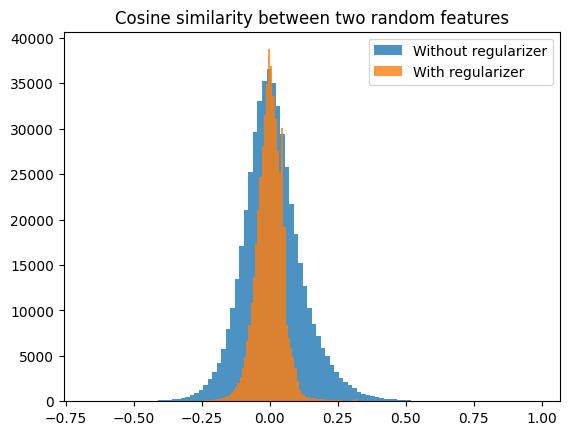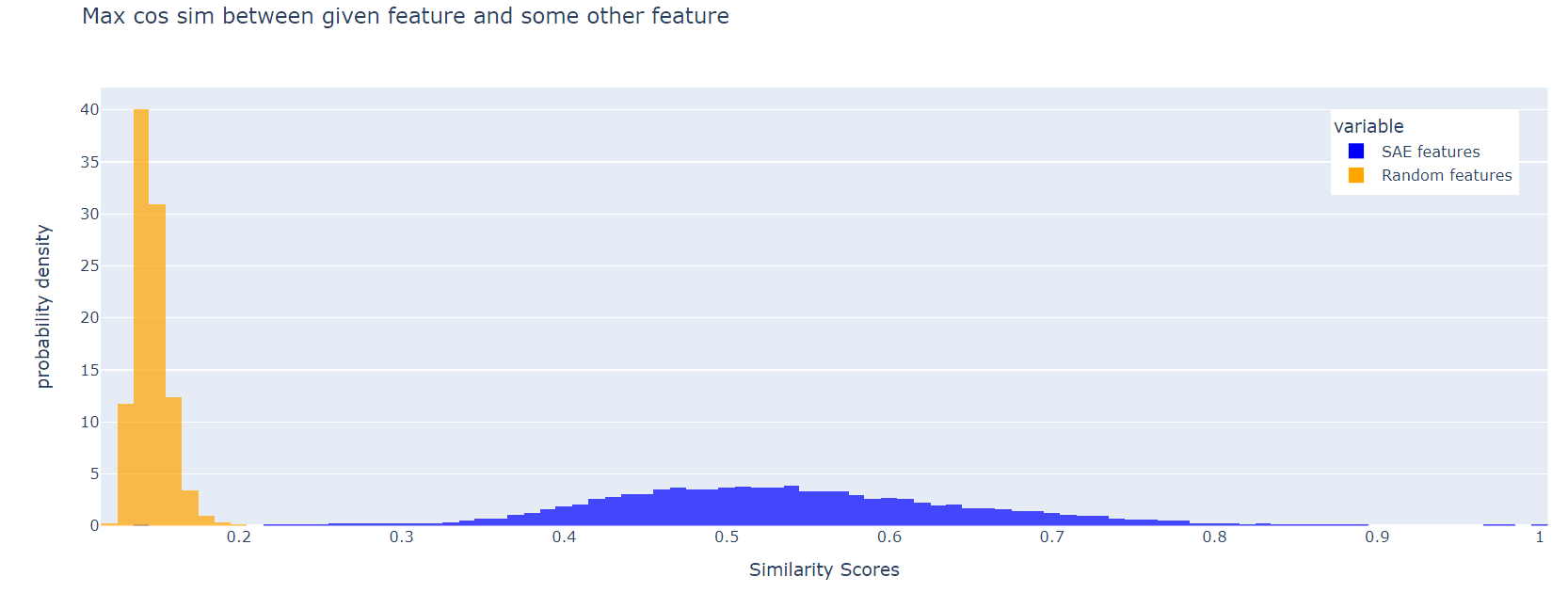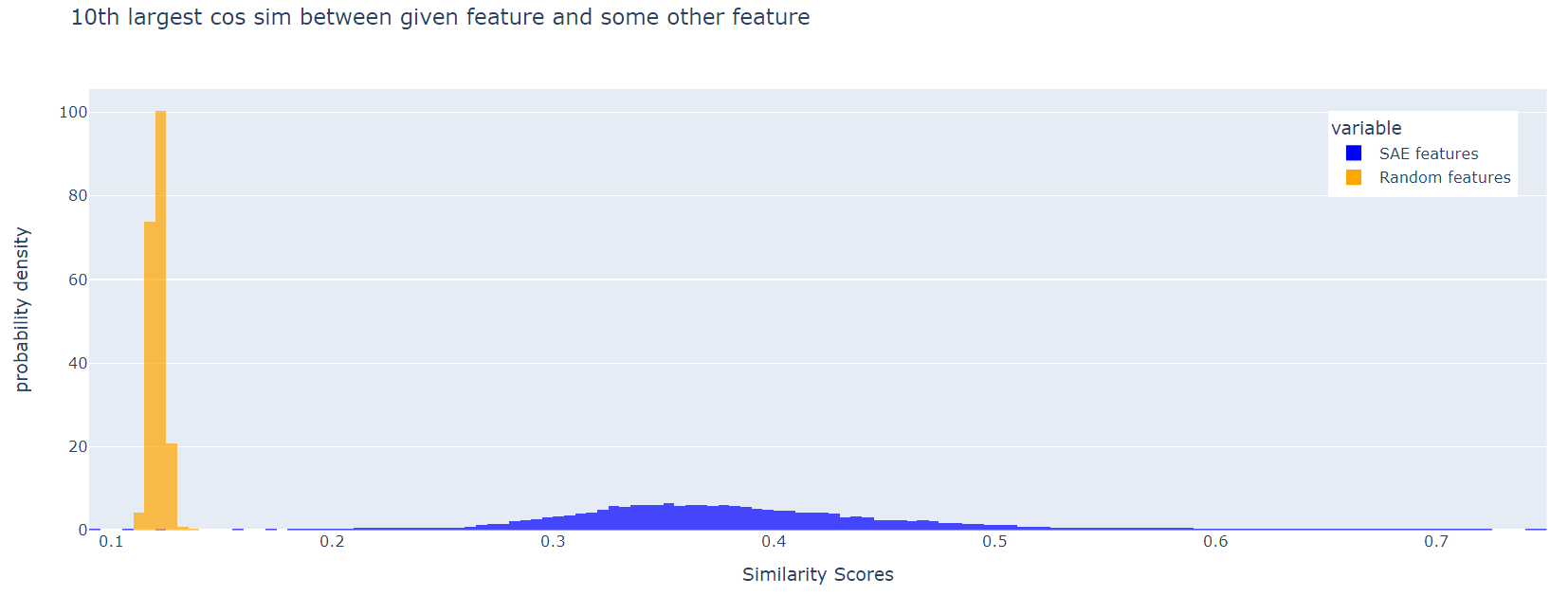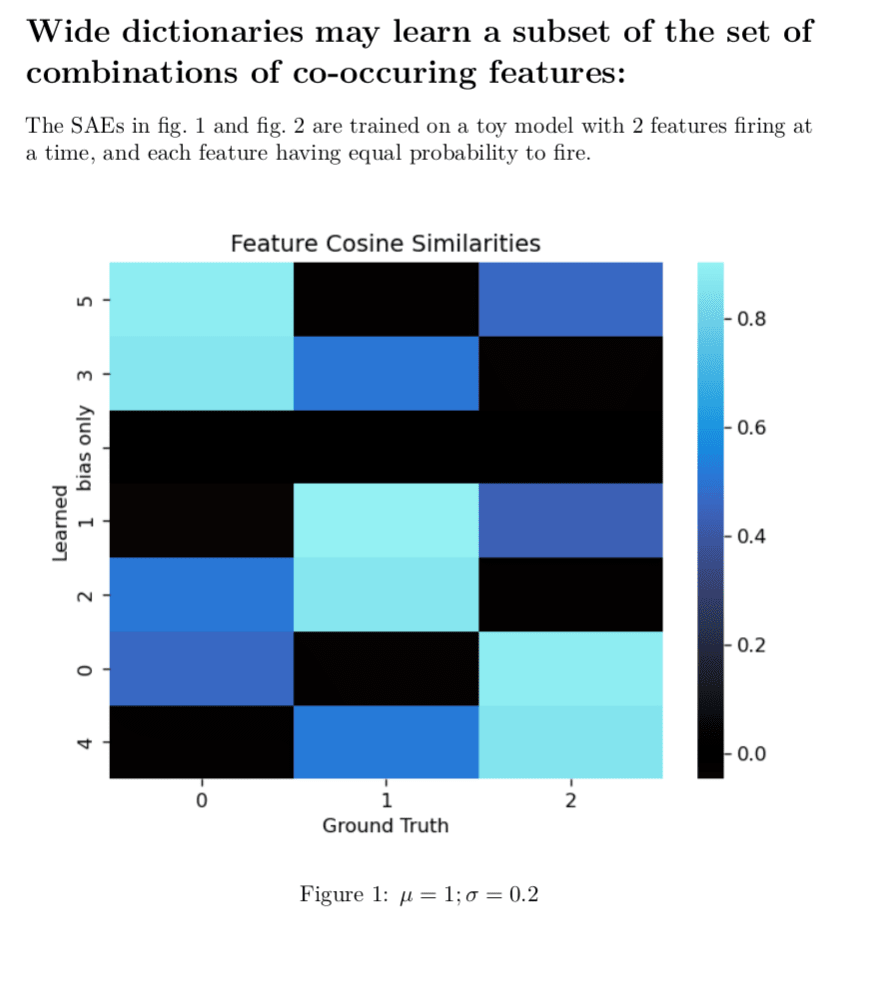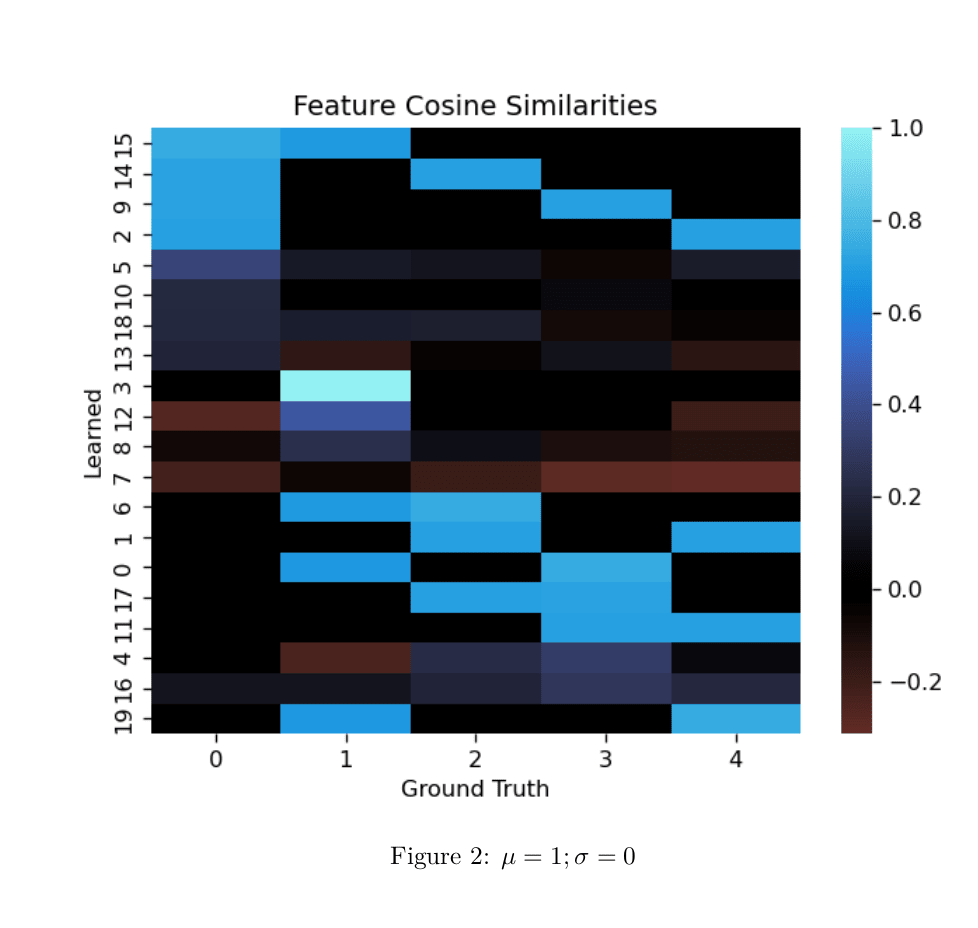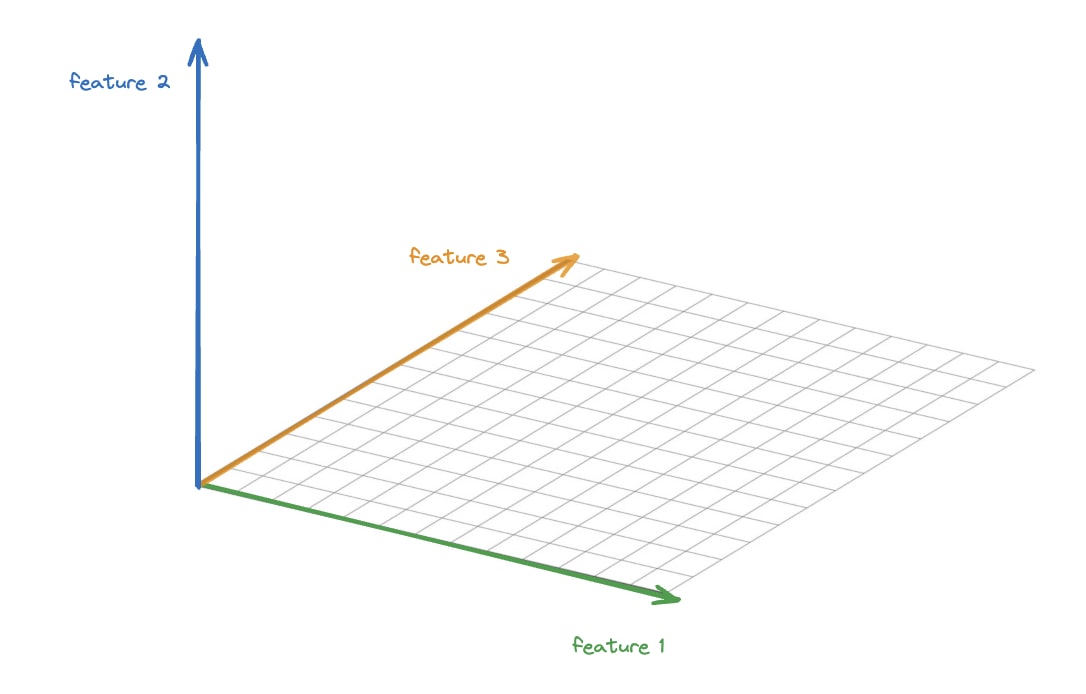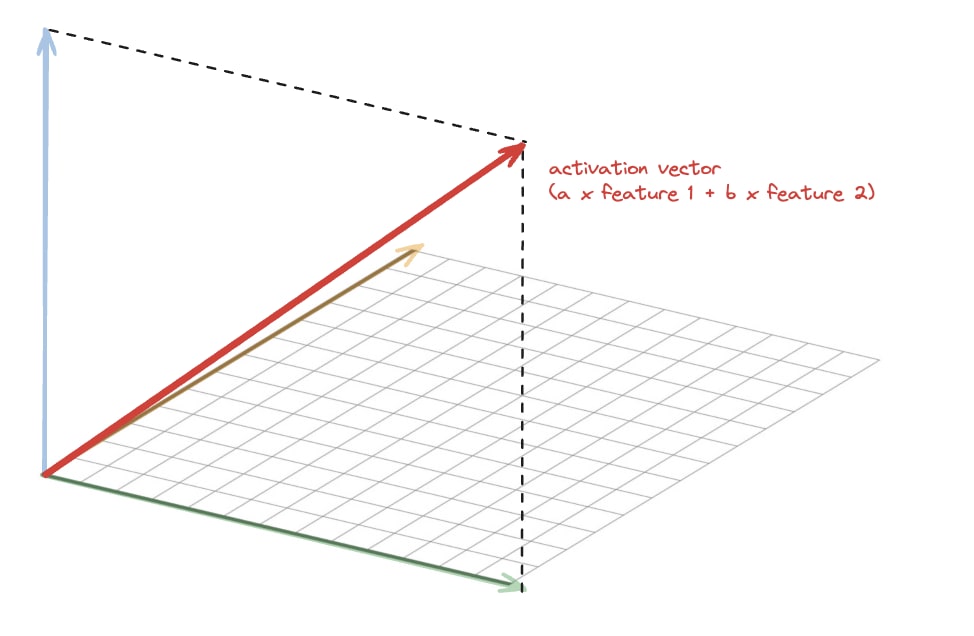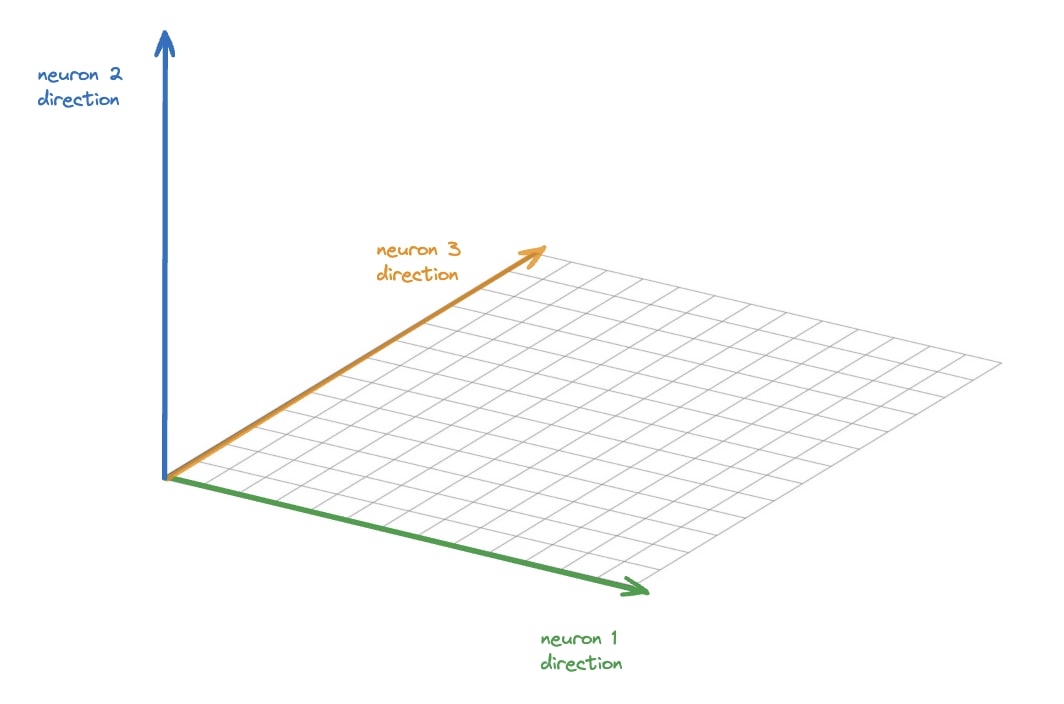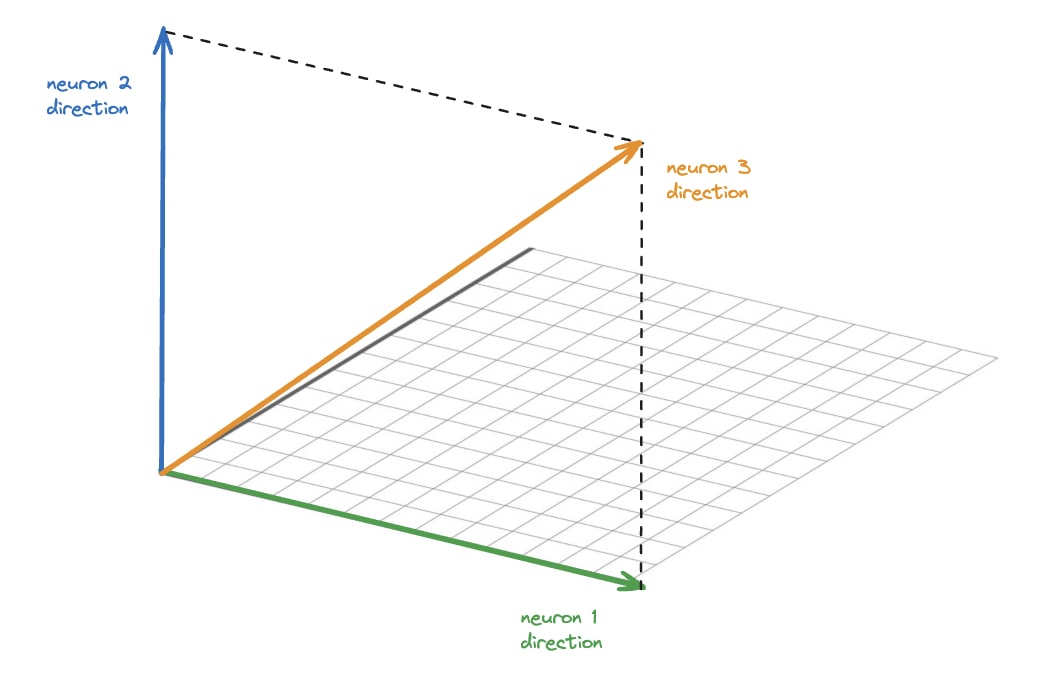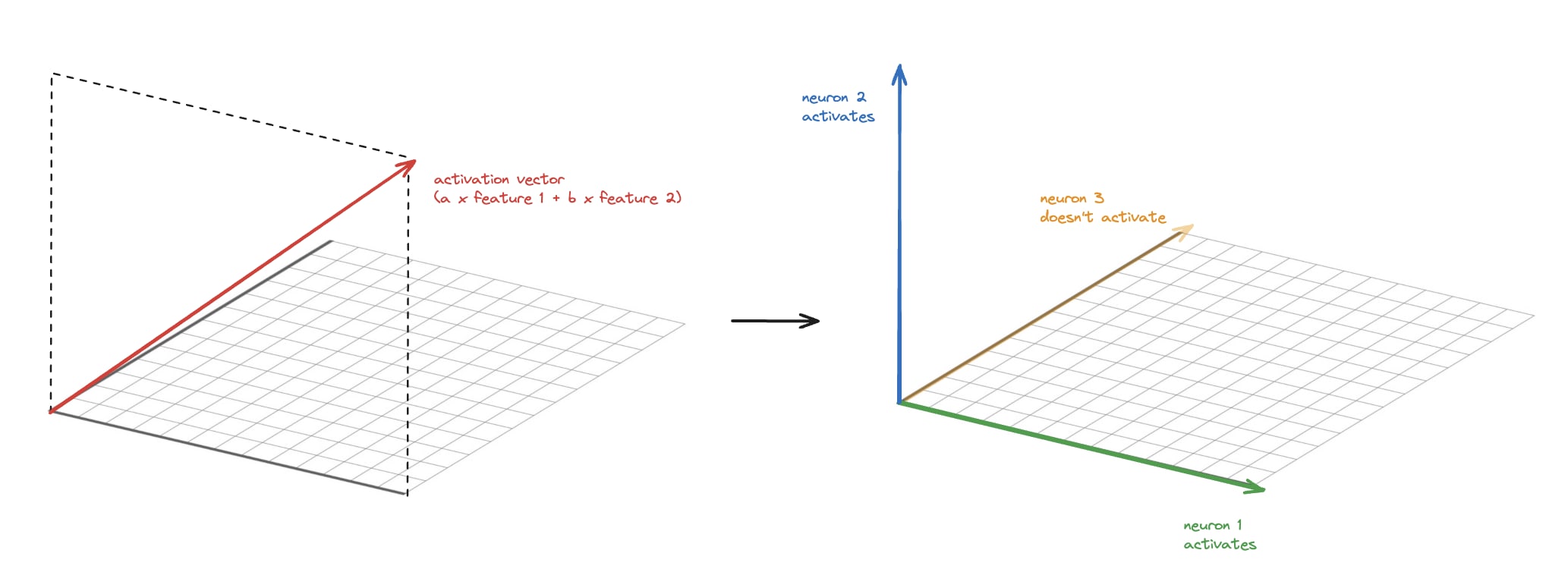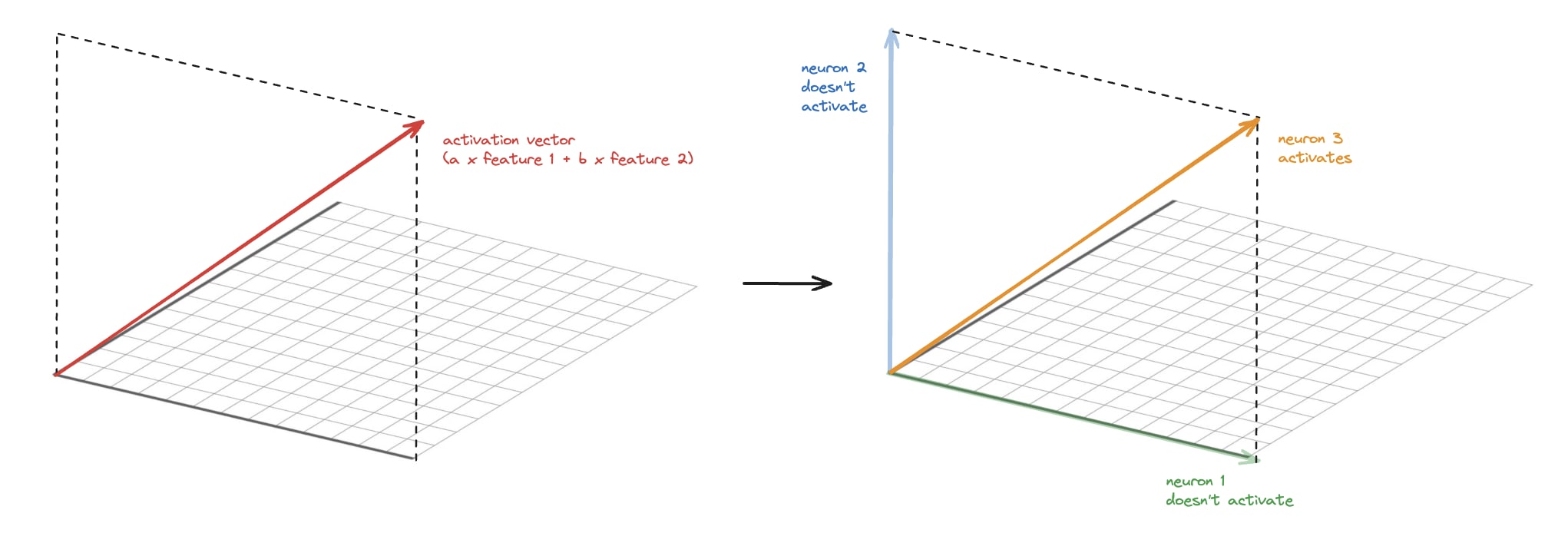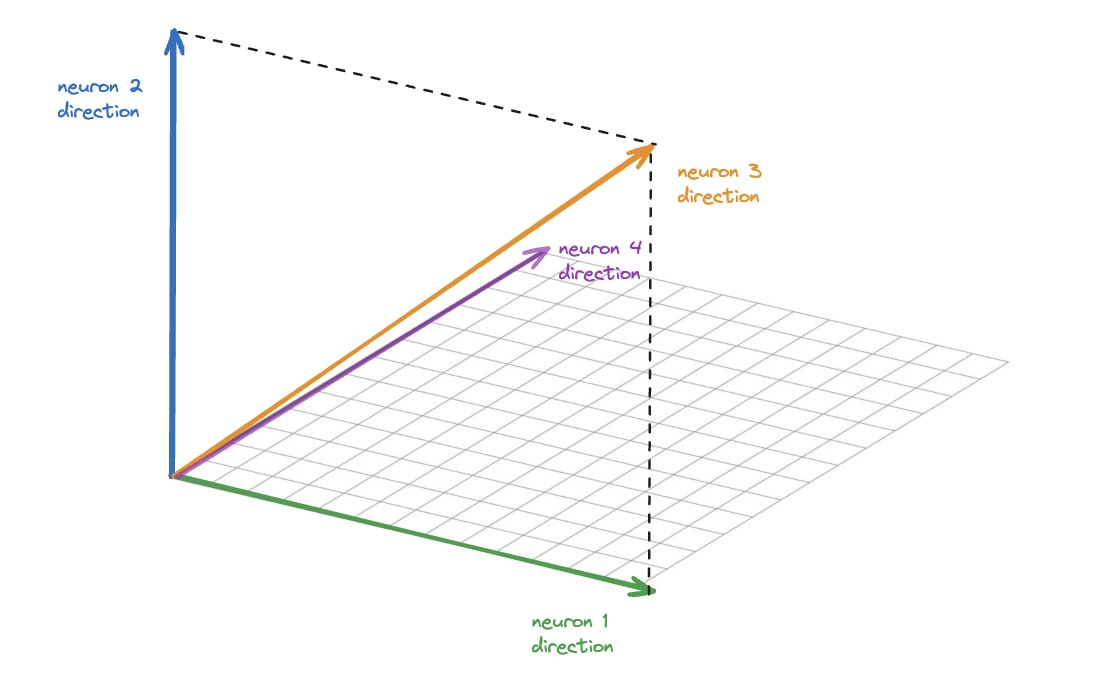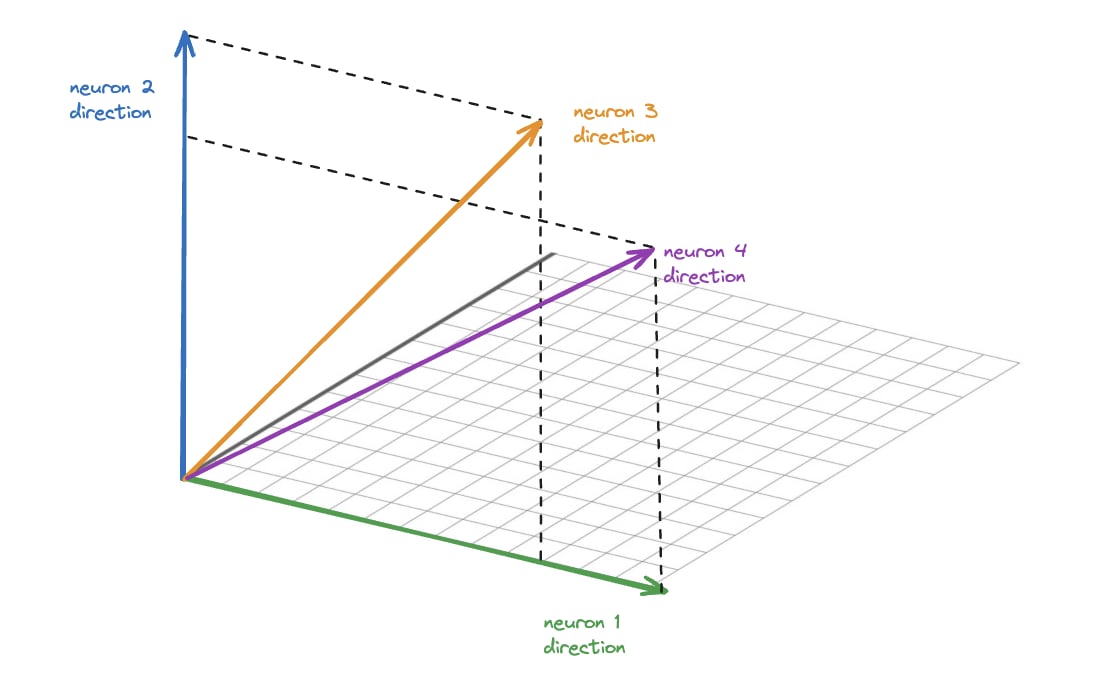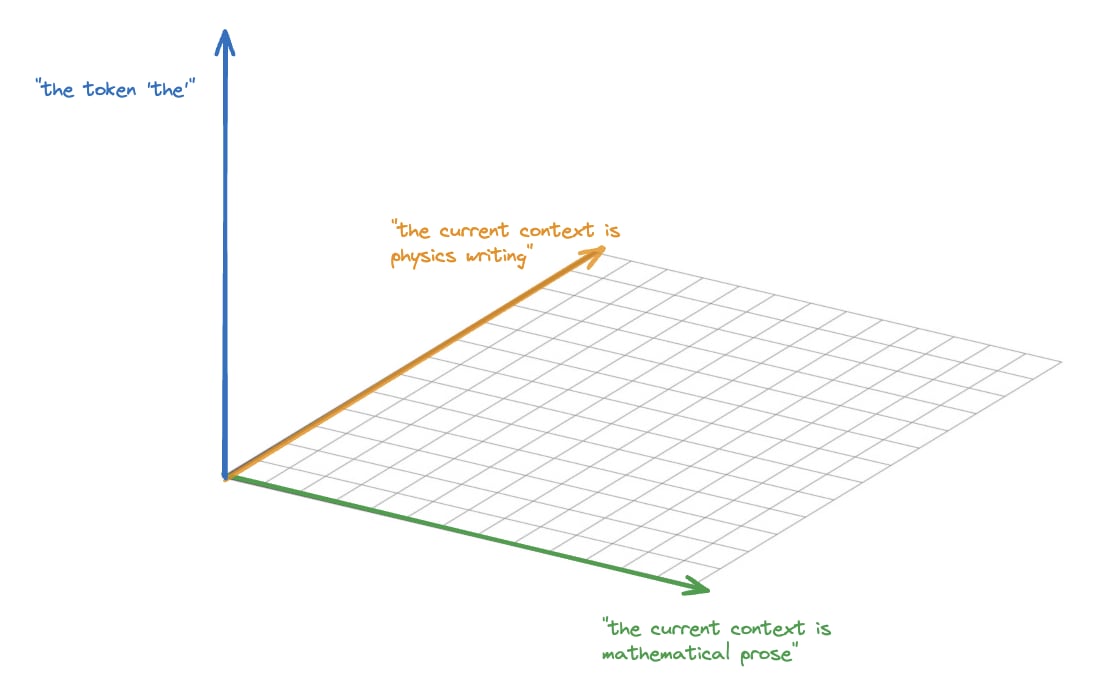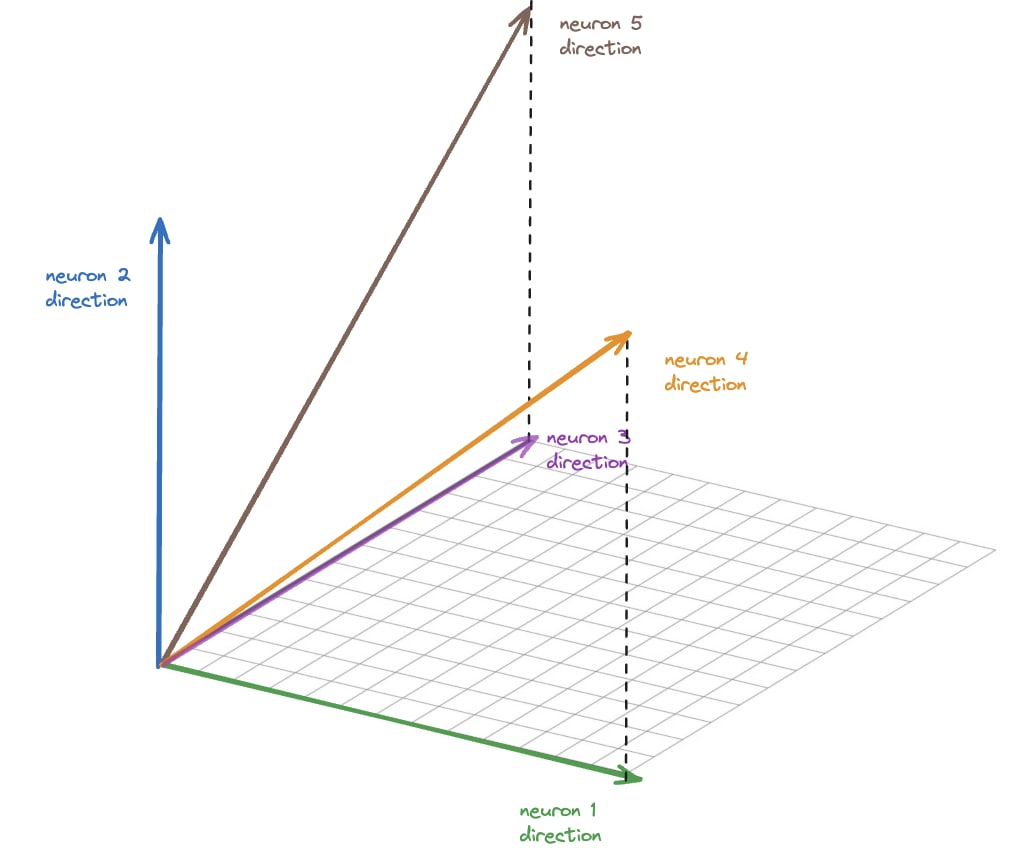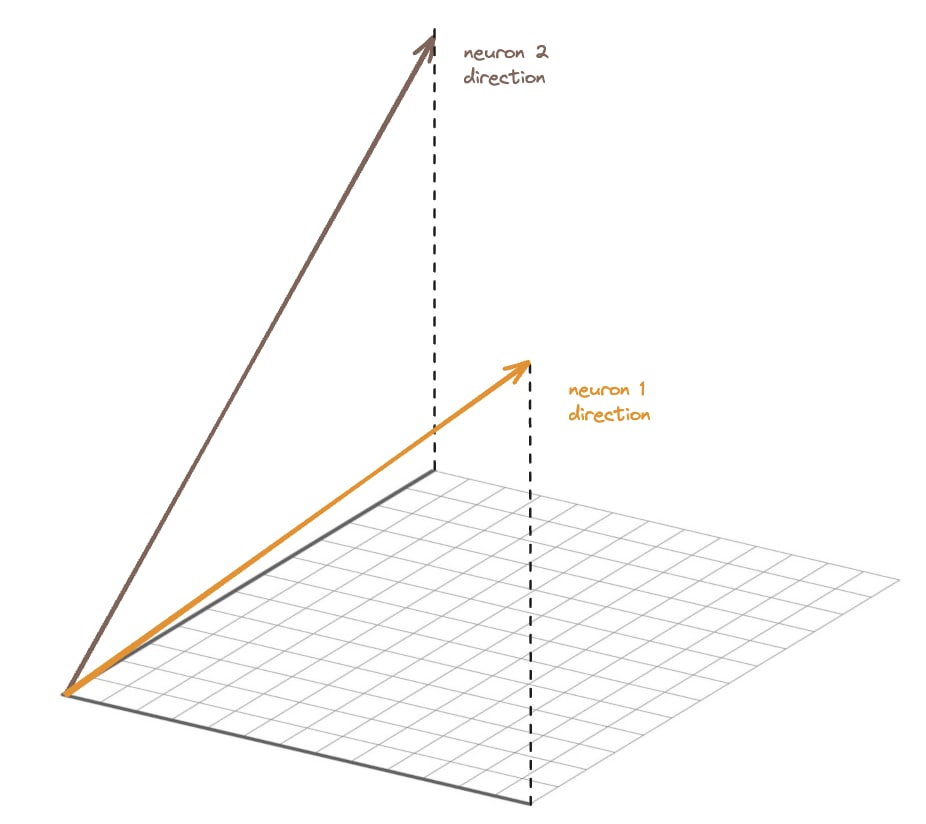A quick and dirty first experiment with adding an orthogonality regularizer indicates that this can work without too much penalty on the reconstruction loss. I trained an SAE on the MLP output of a 1-layer model with dictionary size 8192 (16 times the MLP output size).
I trained this without the regularizer and got a reconstruction score of 0.846 at an L0 of ~17.
With the regularizer, I got a reconstruction score of 0.828 at an L0 of ~18.
Looking at the cosine similarities between neurons:

Interesting peaks around a cosine similarity of 0.3 and 0.05 there! Maybe (very speculative) that tells us something about the way the model encodes features in superposition?
The peaks at 0.05 and 0.3 are strange. What regulariser did you use? Also, could you check whether all features whose nearest neighbour has cosine similarity 0.3 have the same nearest neighbour (and likewise for 0.05)?
I expect the 0.05 peak might be the minimum cosine similarity if you want to distribute 8192 vectors over a 512-dimensional space uniformly? I used a bit of a weird regularizer where I penalized:
mean cosine similarity + mean max cosine similarity + max max cosine similarity
I will check later whether the 0.3 peak all have the same neighbour.
Nice, that's promising! It would also be interesting to see how those peaks are affected when you retrain the SAE both on the same target model and on different target models.
In the limit of infinite SAE width and infinite (iid) training data, you can get perfect reconstruction and perfect sparsity (both L0 and L1). We can think of this as maximal feature splitting. Obviously, this is undesirable, because you've discarded all of the structure present in your data.
Therefore, reconstruction and sparsity aren't exactly the thing we most fundamentally care about. It just happens to do something reasonable at practical scales. However, that doesn't mean we have to throw it out - we might hope that it gives us enough of a foothold in practice.
In particular, the maximal feature splitting case requires exponentially many latents. We might believe that in practice, on the spectrum from splitting too little (polysemanticity) to splitting too much, erring on the side of splitting too much is preferable, because we can still do circuit finding and so on if we artificially cut some existing features into smaller pieces.
Regarding achieving perfect reconstruction and perfect sparsity in the limit, I was also thinking along those lines i.e. in the limit you could have a single neuron in the sparse layer for every possible input direction. However please correct me if I’m wrong but assuming the SAE has only one hidden layer then I don't think you could prevent neurons from activating for nearby input directions (unless all input directions had equal magnitude), so you'd end up with many neurons activating for any given input and thus imperfect sparsity.
Otherwise mostly agreed. Though as discussed, as well as making it necessary to figure out how to break apart feature combinations (as you said), feature splitting would also seem to incur the risk of less common “true features” not being represented even within combinations so those would get missed entirely.
This is a very good explanation of why SAE's incentivize feature combinatorics. Nice! I hadn't thought about the tradeoff between the MSE-reduction for learning a rare feature & the L1-reduction for learning a common feature combination.
Freezing already learned features to iteratively learn more and more features could work. In concrete details, I think you would:
1. Learn an initial SAE w/ a much lower L0 (higher l1-alpha) than normally desired.
2. Learn a new SAE to predict the residual of (1), so the MSE would be only on what (1) messed up predicting. The l1 would also only be on this new SAE (since the other is frozen). You would still learn a new decoder-bias which should just be added on to the old one.
3. Combine & repeat until desired losses are obtained
There are at least 3 hyperparameters here to tune:
L1-alpha (and do you keep it the same or try to have smaller number of features per iteration?), how many tokens to train on each (& I guess if you should repeat data?), & how many new features to add each iteration.
I believe the above should avoid problems. For example, suppose your first iteration perfectly reconstructs a datapoint, then the new SAE is incentivized to have low L1 but not activating at all for those datapoints.
Thanks! Yeah I think those steps make sense for the iterative process, but I'm not sure if you're proposing that would tackle the problem of feature combinations by itself? I'm still imagining it would require orthogonality regularisation with some weighting
I've been looking into your proposed solution (inspired by @Charlie Steiner 's comment). For small models (Pythia-70M is d_model=512) w/ 2k features doesn't take long to calculate naively, so it's viable for initial testing & algorithmic improvements can be stacked later.
There are a few choices regardless of optimal solution:
- Cos-sim of closest neighbor only or average of all vectors?
- If closest neighbor, should this be calculated as unique closest neighbor? (I've done hungarian algorithm before to calculate this). If not, we're penalizing features that are close (or more "central") to many other features more than others.
- Per batch, only a subset of features activate. Should the cos-sim only be on the features that activate? The orthogonality regularizer would be trading off L1 & MSE, so it might be too strong if it's calculated on all features.
- Gradient question: is there still gradient updates on the decoder weights of feature vectors that didn't activate.
- Loss function. Do we penalize high cos-sim more? There's also a base-random cos-sim of ~.2 for the 500x2k vectors.
I'm currently thinking cos-sim of closest neighbor only, not unique & only on features that activate (we can also do ablations to check). For loss function, we could modify a sigmoid function:
This makes the loss centered between 0 & 1 & higher cos-sim penalized more & lower cos-sim penalized less.
Metrics:
During training, we can periodically check the max mean cos-sim (MMCS). This is the average cos-sim of the non-unique nearest neighbors. Alternatively pushing the histogram (histograms are nice, but harder to compare across runs in wandb). I would like to see normal (w/o an orthogonality regularizer) training run's histogram for setting the hyperparams for the loss function.
Algorithmic Improvements:
The wiki for Closest Pair of Points (h/t Oam) & Nearest neighbor search seem relevant if one computes the nearest neighbor to create an index as Charlie suggested.
Faiss seems SOTA AFAIK for fast nearest neighbors on a gpu although:
adding or searching a large number of vectors should be done in batches. This is not done automatically yet. Typical batch sizes are powers of two around 8192, see this example.
I believe this is for GPU-memory constraints.
I had trouble installing it using
conda install pytorch::faiss-gpu
but it works if you do
conda install -c pytorch -c nvidia faiss-gpu=1.7.4 mkl=2021 blas=1.0=mkl
I also was unsuccessful installing it w/ just pip w/o conda & conda is their offical supported way to install from here.
An additional note is that the cosine similarity is the dot-product for our case, since all feature vectors are normalized by default.
I'm currently ignoring the algorithmic improvements due to the additional complexity, but should be doable if it produces good results.
Testing it with Pythia-70M and few enough features to permit the naive calculation sounds like a great approach to start with.
Closest neighbour rather than average over all sounds sensible. I'm not certain what you mean by unique vs non-unique. If you're referring to situations where there may be several equally close closest neighbours then I think we can just take the mean cos-sim of those neighbours, so they all impact on the loss but the magnitude of the loss stays within the normal range.
Only on features that activate also sounds sensible, but the decoder weights of neurons that didn't activate would need to be allowed to update if they were the closest neighbours for neurons that did activate. Otherwise we could get situations where e.g. one neuron (neuron A) has encoder and decoder weights both pointing in sensible directions to capture a feature, but another neuron has decoder weights aligned with neuron A but has encoder weights occupying a remote region of activation space and thus rarely activates, causing its decoder weights to remain in that direction blocking neuron A if we don't allow it to update.
Yes I think we want to penalise high cos-sim more. The modified sigmoid flattens out as x->1 but the I think the purple function below does what we want.
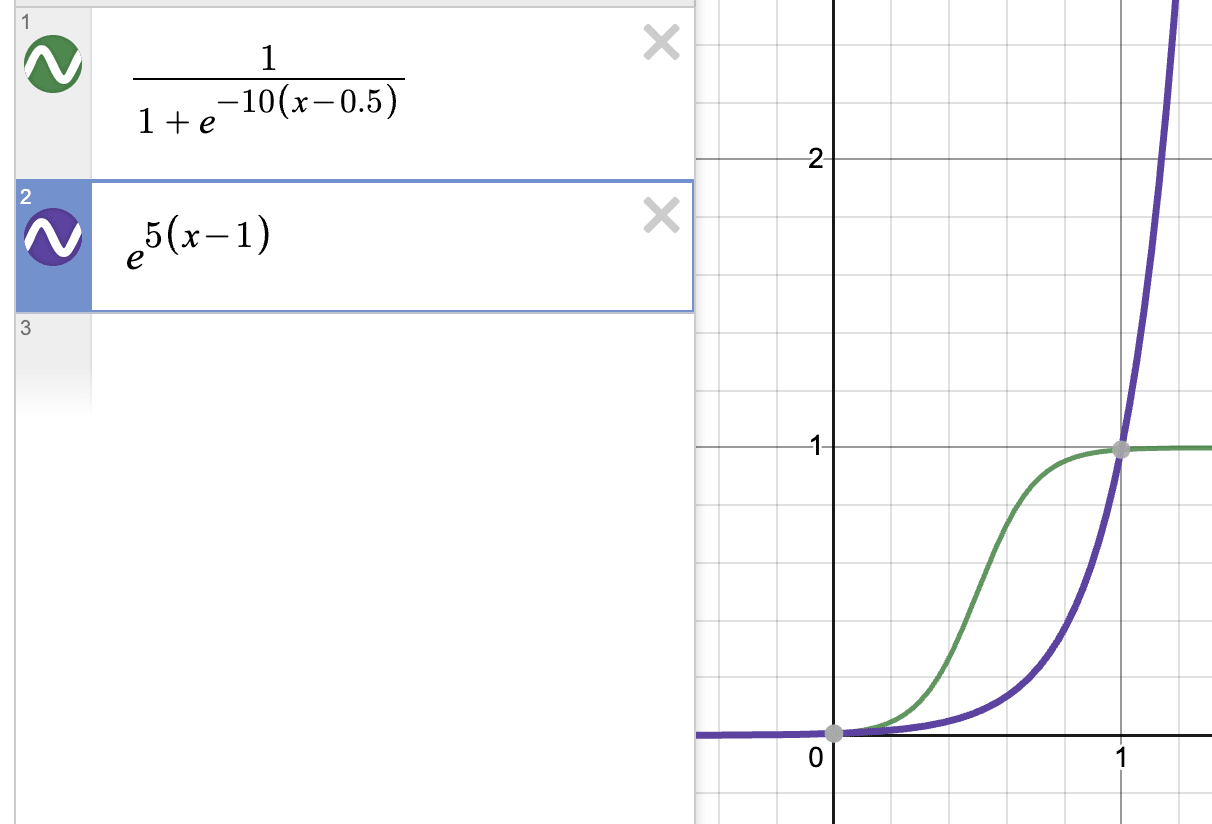
Training with a negative orthogonality regulariser could be an option. I think vanilla SAEs already have plenty of geometrically aligned features (e.g. see @jacobcd52 's comment below). Depending on the purpose, another option to intentionally generate feature combinatorics could be to simply add together some of the features learnt by a vanilla SAE. If the individual features weren't combinations then their sums certainly would be.
I'll be very interested to see results and am happy to help with interpreting them etc. Also more than happy to have a look at any code.
Additionally, we can train w/ a negative orthogonality regularizer for the purpose of intentionally generating feature-combinatorics. In other words, we train for the features to point in more of the same direction to at least generate for-sure examples of feature combination.
For each SAE feature (i.e. each column of W_dec), we can look for a distinct feature with the maximum cosine similarity to the first. Here is a histogram of these max cos sims, for Joseph Bloom's SAE trained at resid_pre, layer 10 in gpt2-small. The corresponding plot for random features is shown for comparison:
The SAE features are much less orthogonal than the random ones. This effect persists if, instead of the maximum cosine similarity, we look at the 10th largest, or the 100th largest:
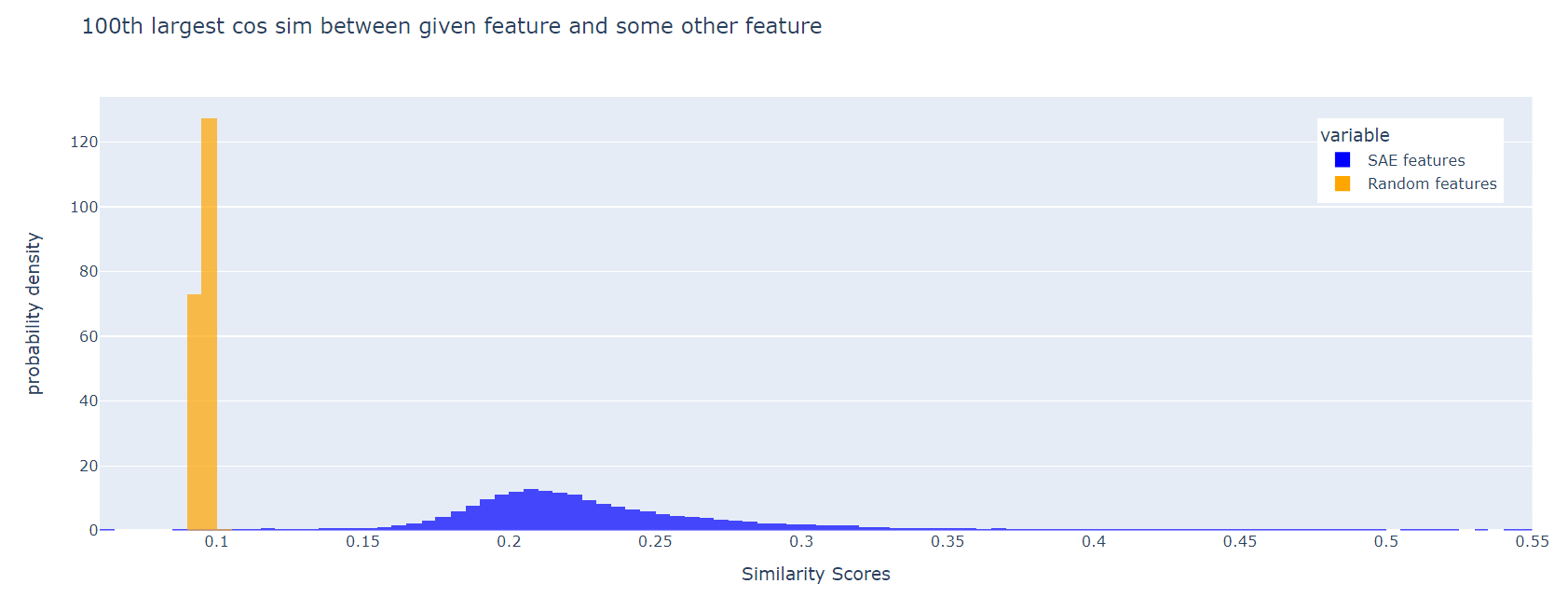
I think it's a good idea to include a loss term to incentivise feature orthogonality.
I agree with pretty much all these points. This problem has motivated some work I have been doing and has been pretty relevant to think well about and test so I made some toy models of the situation.
This is a minimal proof of concept example I had lying around, and insufficient to prove this will happen in larger model, but definitely shows that composite features are a possible outcome and validates what you're saying:
Here, it has not learned a single atomic feature.
All the true features are orthogonal which makes it easier to read the cosine-similarity heatmap.
and are mean and standard deviation of all features.
Note on "bias only" on the y-axis: The "bias only" entry in the learned features is the cosine similarity of the decoder bias with the ground truth features. It's all zeros, because I disabled the bias for this run to make the decoder weights more directly interpretable. otherwise, in such a small model it'll use the bias to do tricky things which also make the graph much less readable. We know the features are centered around the origin in this toy so zeroing the bias seems fine to do.
Edit: Remembered I have a larger example of the phenomena. Same setup as above.
This looks interesting. I'm having a difficult time understanding the results though. It would be great to see a more detailed write up!
Quadratic complexity isn't that bad, if this is useful. If your feature vectors are normalized you can do it faster by taking a matrix product of the weights "the big way" and just penalizing the trace for being far from ones or zeros. I think?
Feature vector normalization is itself an examble of a quadratic thing that makes it in.
Even for a fairly small target model we might want to discover e.g. 100K features and and the input vectors might be e.g. 768D. That's a lot of work to compute that matrix!
Hm. Okay, I remembered a better way to improve efficiency: neighbor lists. For each feature, remember a list of who its closest neighbors are, and just compute your "closeness loss" by calculating dot products in that list.
The neighbor list itself can either be recomputed once in a while using the naive method, or you can accelerate the neighbor list recomputation by keeping more coarse-grained track of where features are in activation-space.
Thanks, I mentioned this as a potential way forward for tackling quadratic complexity in my edit at the end of the post.
A potential approach to tackle this could be to aim to discover features in smaller batches. After each batch of discovered features finishes learning we could freeze them and only calculate the orthogonality regularisation within the next batch, as well as between the next batch and the frozen features. Importantly we wouldn’t need to apply the regularisation within the already discovered features.
Wouldn't this still be quadratic?
If n is the number of feature we're trying to discover and m is the number of features in each batch, then I'm thinking the naive approach is O(n^2) while the batch approach would be O(m^2 + mn). Still quadratic in m, but we would have m<<n
The SAE could learn to represent the true features, A & B, as the left graph, so the orthogonal regularizer would help. When you say the SAE would learn inhibitory weights*, I'm imagining the graph on the right; however, these features are mostly orthogonal to eachother meaning the proposed solution won't work AFAIK.
(Also, would be the regularizer be abs(cos_sim(x,x'))?)
*In this example this is because the encoder would need inhibitory weights to e.g. prevent neuron 1 from activating when both neurons 1 & 2 are present as we will discuss shortly.
yeah I was thinking abs(cos_sim(x,x'))
I'm not sure what you're getting at regarding the inhibitory weights as the image link is broken
Thanks for saying the link is broken!
If the True Features are located at:
A: (0,1)
B: (1,0)
[So A^B: (1,1)]
Given 3 SAE hidden-dimensions, a ReLU & bias, the model could learn 3 sparse features
1. A^~B (-1, 1)
2. A^B (1,1)
3. ~A^B(1,-1)
that output 1-hot vectors for each feature. These are also are orthogonal to each other.
Concretely:
import torch
W = torch.tensor([[-1, 1],[1,1],[1,-1]])
x = torch.tensor([[0,1], [1,1],[1,0]])
b = torch.tensor([0, -1, 0])
y = torch.nn.functional.relu(x@W.T + b)
It might be worth pointing out ‘ICA with Reconstruction Cost for Efficient Overcomplete Feature Learning’ (@NeurIPS 2011) which argues that the reconstruction cost |WW^Tx - x| can be used as a form of soft orthonormalization loss.
https://proceedings.neurips.cc/paper/2011/file/233509073ed3432027d48b1a83f5fbd2-Paper.pdf
I'm confused about your three-dimensional example and would appreciate more mathematical detail.
Call the feature directions f1, f2, f3.
Suppose SAE hidden neurons 1,2 and 3 read off the components along f1, f2, and f1+f2, respectively. You claim that in some cases this may achieve lower L1 loss than reading off the f1, f2, f3 components.
[note: the component of a vector X along f1+f2 here refers to 1/2 * (f1+f2) \cdot X]
Can you write down the encoder biases that would achieve this loss reduction? Note that e.g. when the input is f1, there is a component of 1/2 along f1+f2, so you need a bias < -1/2 on neuron 3 to avoid screwing up the reconstruction.
Hey Jacob! My comment has a coded example with biases:
import torch
W = torch.tensor([[-1, 1],[1,1],[1,-1]])
x = torch.tensor([[0,1], [1,1],[1,0]])
b = torch.tensor([0, -1, 0])
y = torch.nn.functional.relu(x@W.T + b)This is for the encoder, where y will be the identity (which is sparse for the hidden dimension).
I was confused until I realized that the "sparsity" that this post is referring to is activation sparsity not the more common weight sparsity that you get from L1 penalization of weights.
